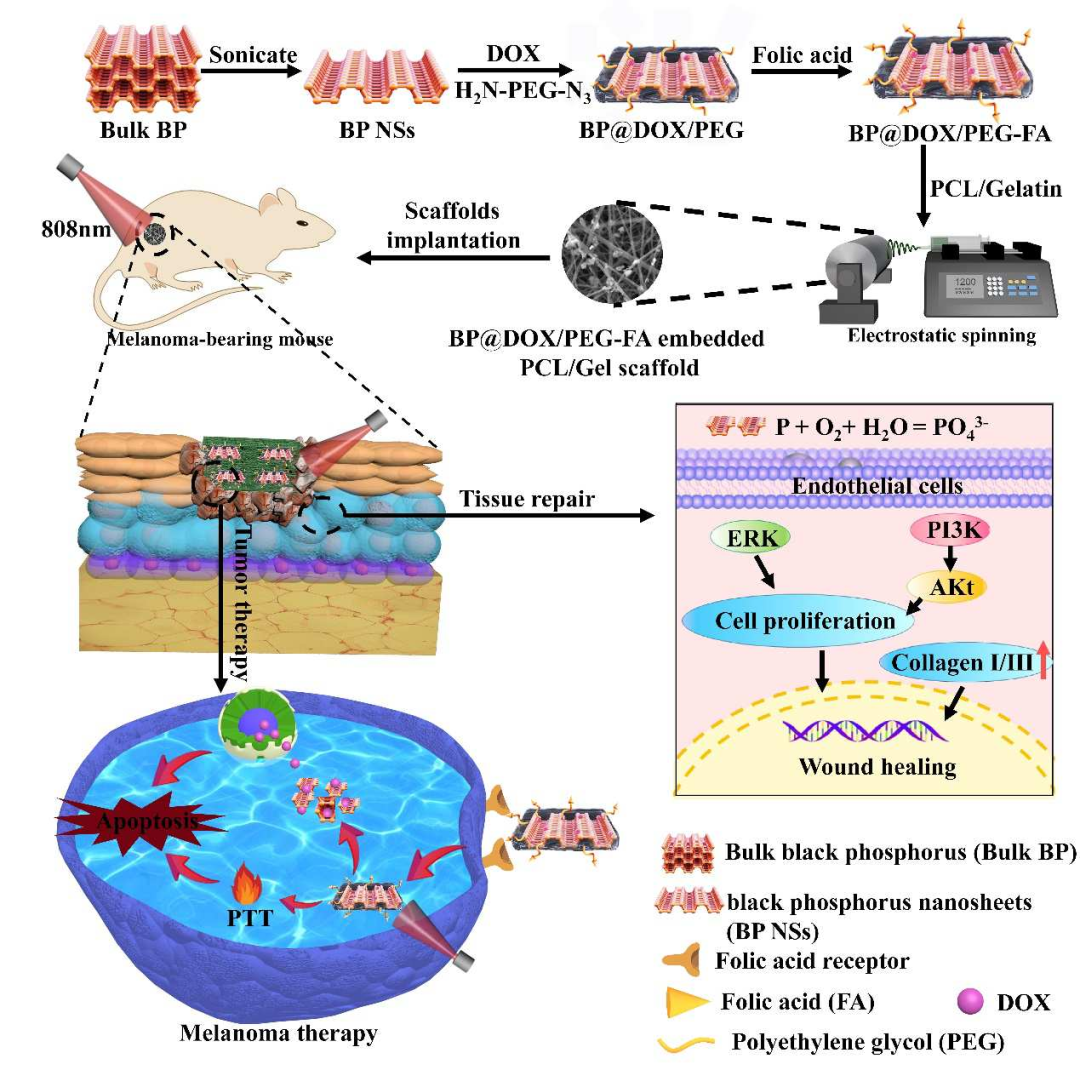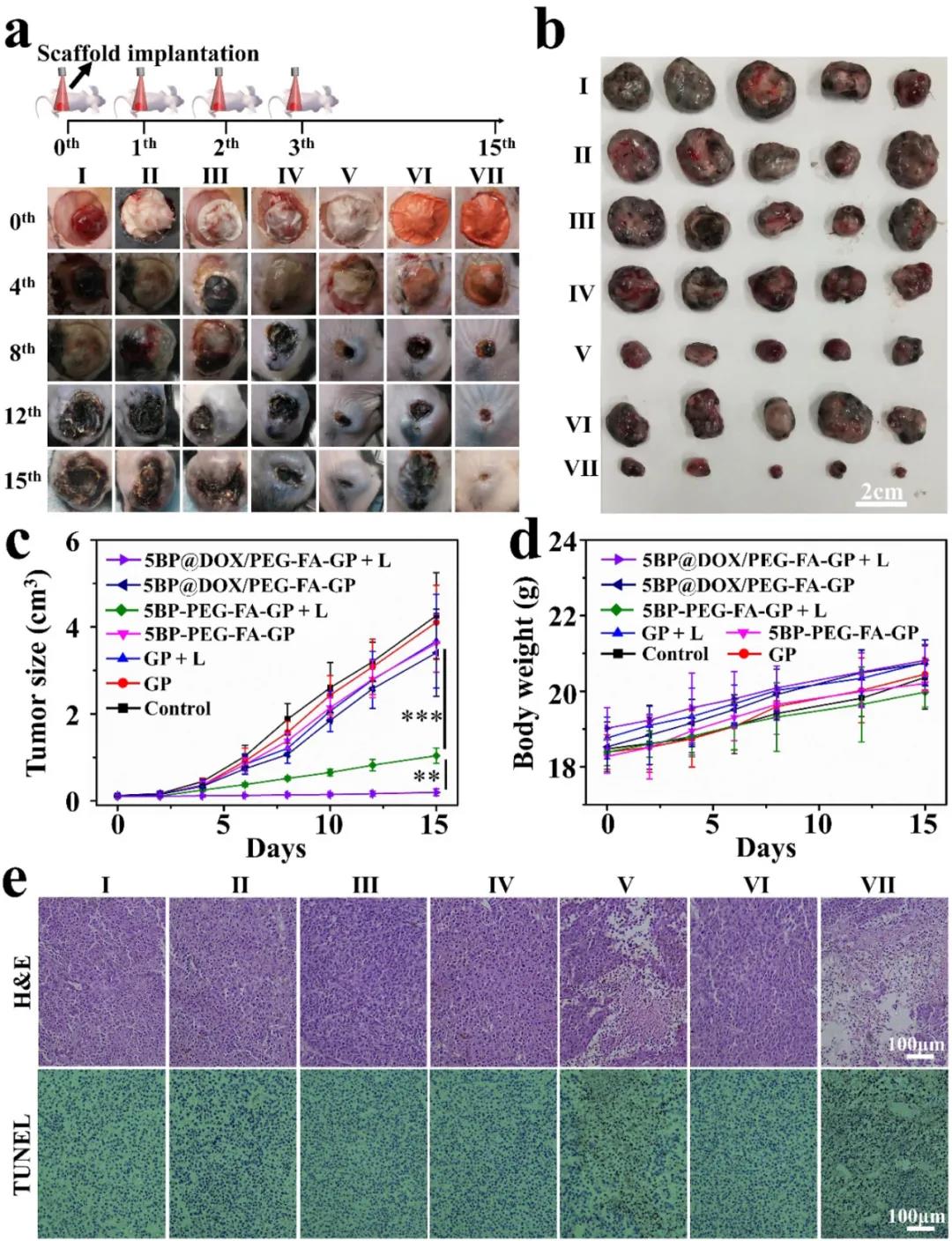
hotline:
17715390137
Tel/Wechat:
18101240246 (Technology)
0512-68565571
Email:mxenes@163.com (Sales Engineer)bkxc.bonnie@gmail.com
Scan the code to follow or search the official account on WeChat:
2D Materials Fronrier After paying attention,
click on the lower right corner to contact us,
Enter enterprise WeChat.
Professional Services Online

Surgical treatment is a mainstream method to combat melanoma, but there are also some shortcomings in its clinical implementation, such as melanoma cell infiltration and serious tissue damage at the edge of resection. Professor Luo Zhong and Associate Professor Hu Yan of Chongqing University have developed a melanin that can be used for surgery by embedding black phosphorous nanosheets (BPNSs) with photothermal properties in bioabsorbable gelatin-PCL (GP) nanofiber scaffold Nanocomposite scaffolds for in-situ treatment of tumors and wound healing.

Key points of this article:
(1) GP scaffold is a kind of biological material that has undergone clinical trials, has temperature sensitivity and promotes tissue healing. BPNSs can be loaded with the anticancer drug doxorubicin (DOX), and can be combined with NH2-PEG-FA to achieve targeted delivery to tumors. Under near-infrared light stimulation, the GP scaffold will undergo a sol-gel transition and release BPNSs in situ. In this process, most of the BP-based nanomedicines will be selectively internalized by melanoma cells to achieve coordinated photothermal therapy and photothermal triggered DOX therapy, and some DOX will also be released to enter the wound tissue In this way, a microenvironment that inhibits tumors is formed.

(2) In addition, BPNSs will also gradually degrade to produce phosphate/phosphonate, thereby activating the ERK1/2 and PI3K/Akt pathways to enhance tissue repair. At the same time, DOX molecules will also enter the wound tissue to continuously inhibit melanoma. Experimental results show that the composite stent has good anti-melanoma and wound healing functions. Therefore, this research also provides a new strategy for enhancing postoperative wound treatment of melanoma.
references:

Chencheng Xue. et al. Implantable Multifunctional Black Phosphorus Nanoformulation-deposited Biodegradable Scaffold for Combinational Photothermal/ chemotherapy and Wound Healing. Biomaterials. 2020
https://www.sciencedirect.com/science/article/pii/S014296122030870X
Source of information: Fantastic Object Theory
This information is from the Internet for academic exchanges. If there is any infringement, please contact us to delete

| Reminder: Beijing Beike New Material Technology Co., Ltd. supplies products only for scientific research, not for humans |
| All rights reserved © 2019 beijing beike new material Technology Co., Ltd 京ICP备16054715-2号 |